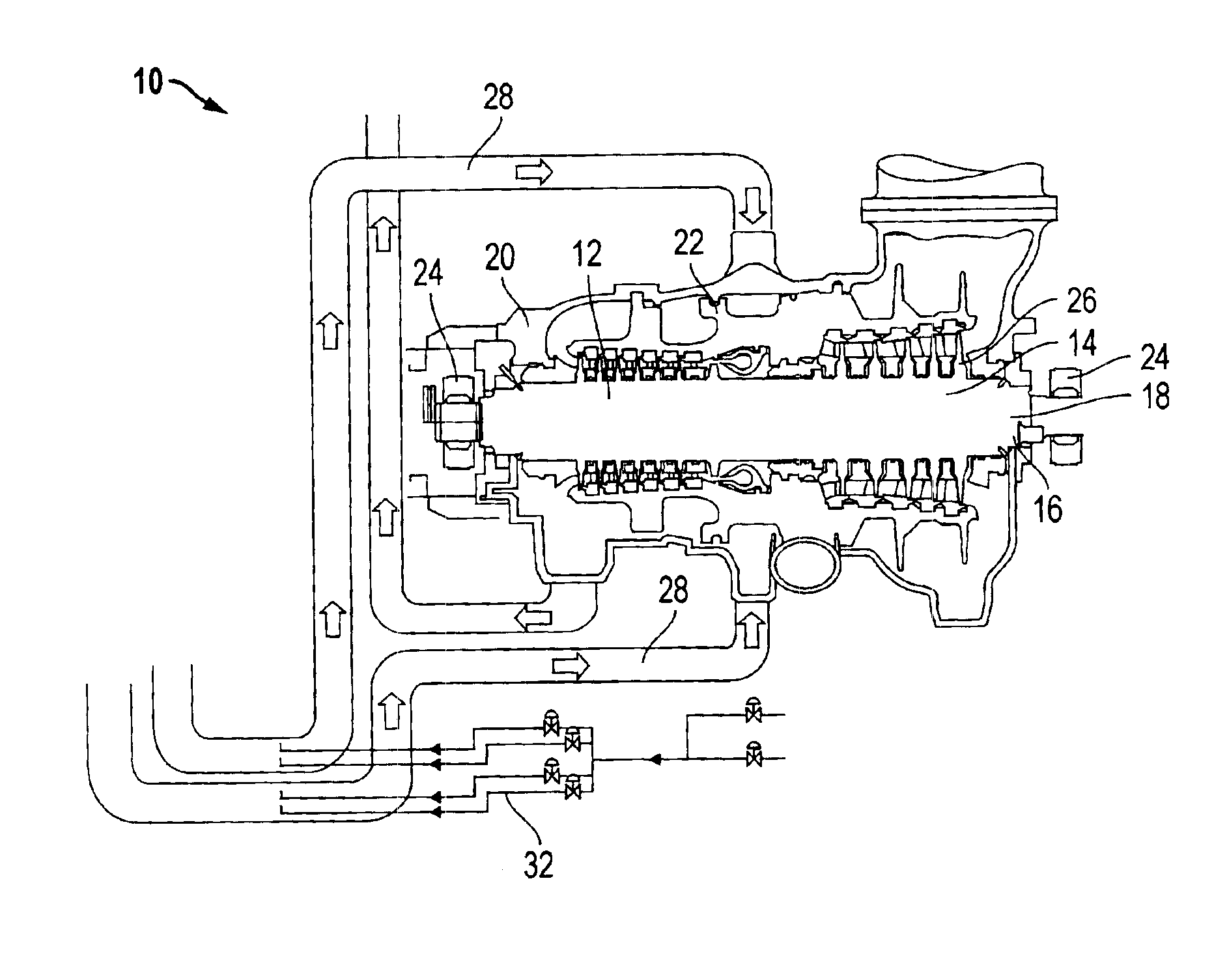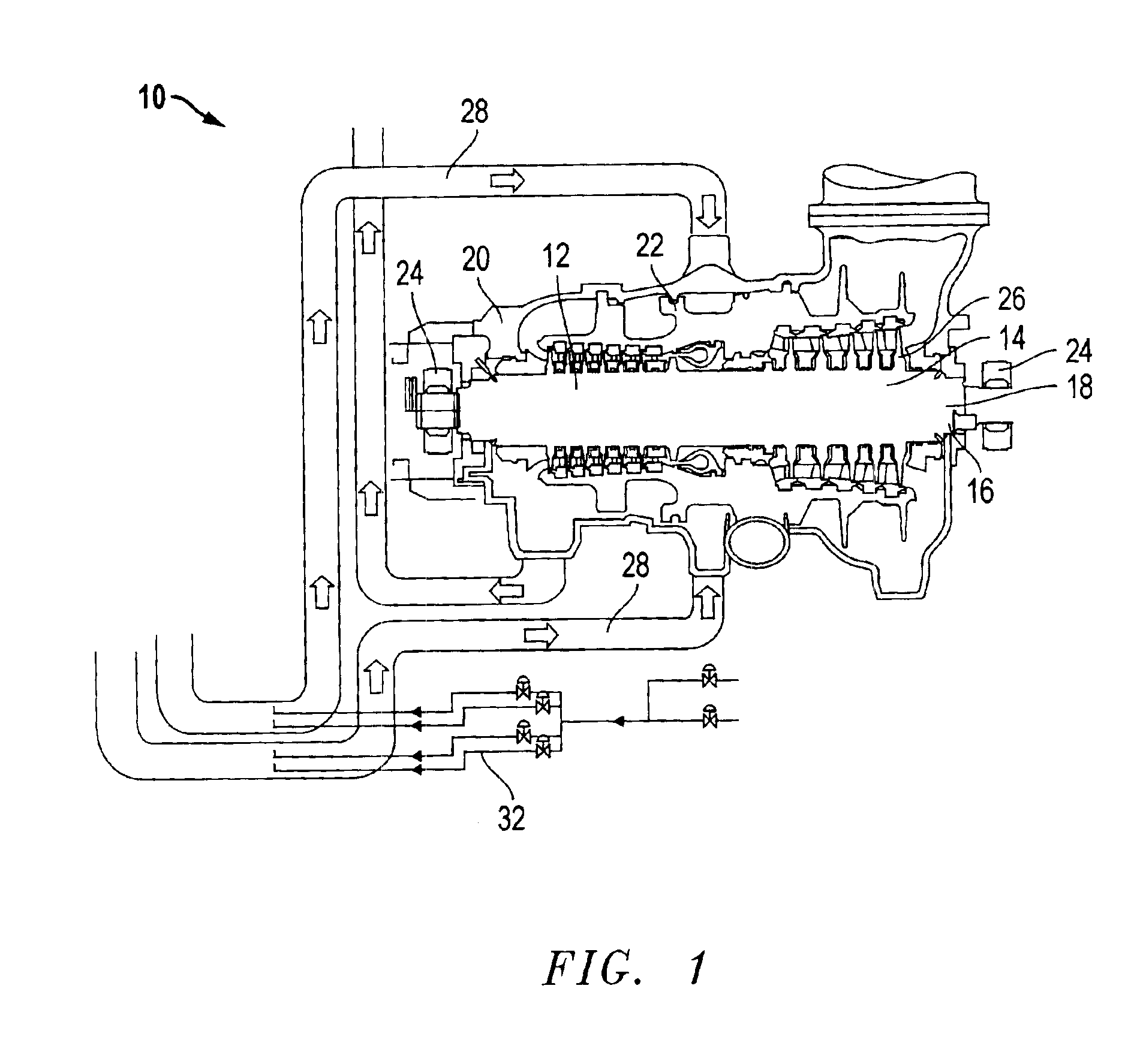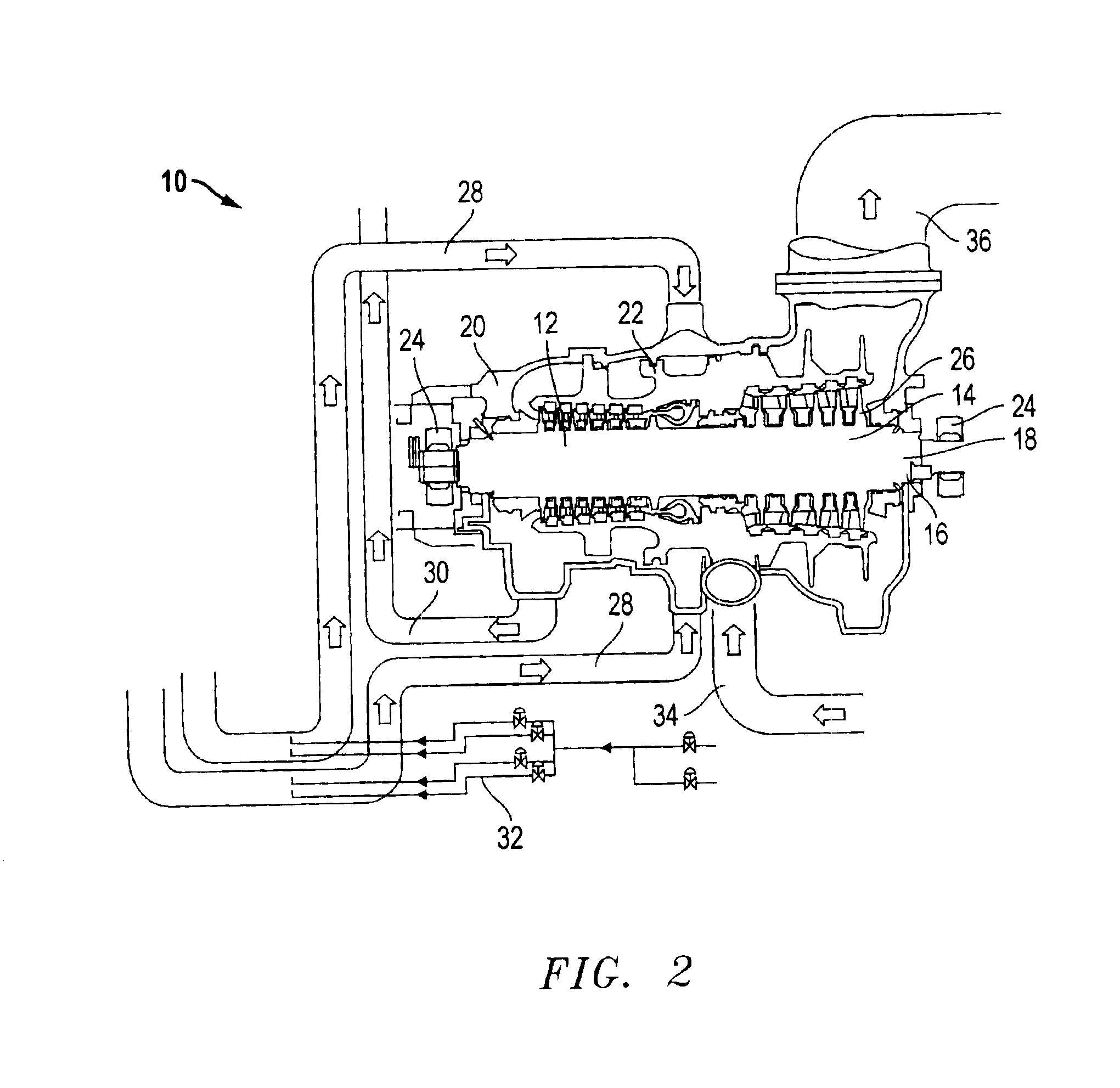System and method of cooling steam turbines
a technology of steam turbines and cooling systems, applied in the direction of liquid fuel engines, liquid degasification, separation processes, etc., can solve the problems of extreme costs, large cooling costs, and high cost, and achieve the effect of reducing downtime and saving costs
- Summary
- Abstract
- Description
- Claims
- Application Information
AI Technical Summary
Benefits of technology
Problems solved by technology
Method used
Image
Examples
Embodiment Construction
[0043]The present invention offers forced cooling of a flow of nitrogen such that a steam turbine may be cooled in a shorter period of time. In a most preferred embodiment, it is expected that a typical large fossil steam turbine unit between 200 and 850 megawatt (“MW”) may be cooled in less than about 48 hours, more preferably less than about 36 hours, most preferably about 24 hours. In fact, it is envisioned that a cool down could be accomplished in as little as about four to about 15 hours in a most preferred embodiment. The time required is dependent on the overall mass of the turbine and the nitrogen flows that can be obtained. The cooling time will be determined by the difference between the time of operation and the time at which the turbine has cooled down from the range of about 350° F. to about 700° F. to a predetermined temperature such as less than about 100° F. to about 200° F. It is expected that substantial differences between turbine sizes, manufactures and power pla...
PUM
| Property | Measurement | Unit |
|---|---|---|
| temperature | aaaaa | aaaaa |
| temperature | aaaaa | aaaaa |
| operating temperatures | aaaaa | aaaaa |
Abstract
Description
Claims
Application Information
 Login to View More
Login to View More - R&D
- Intellectual Property
- Life Sciences
- Materials
- Tech Scout
- Unparalleled Data Quality
- Higher Quality Content
- 60% Fewer Hallucinations
Browse by: Latest US Patents, China's latest patents, Technical Efficacy Thesaurus, Application Domain, Technology Topic, Popular Technical Reports.
© 2025 PatSnap. All rights reserved.Legal|Privacy policy|Modern Slavery Act Transparency Statement|Sitemap|About US| Contact US: help@patsnap.com



